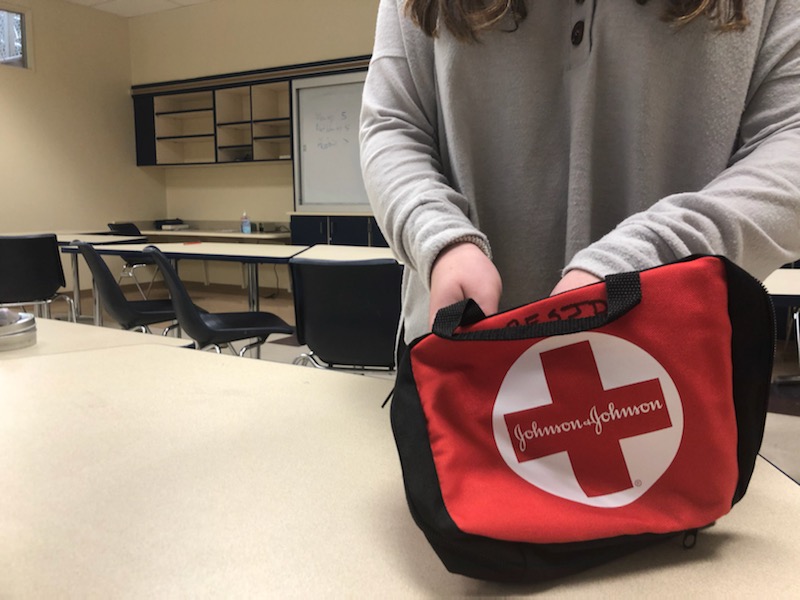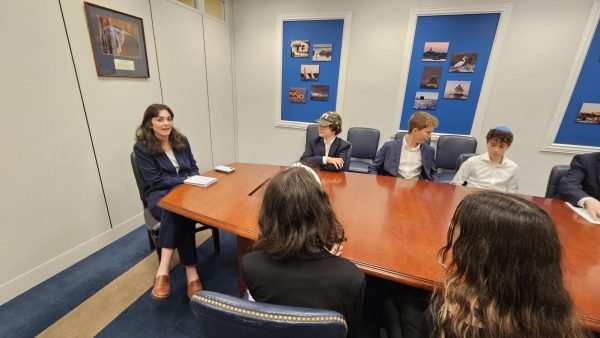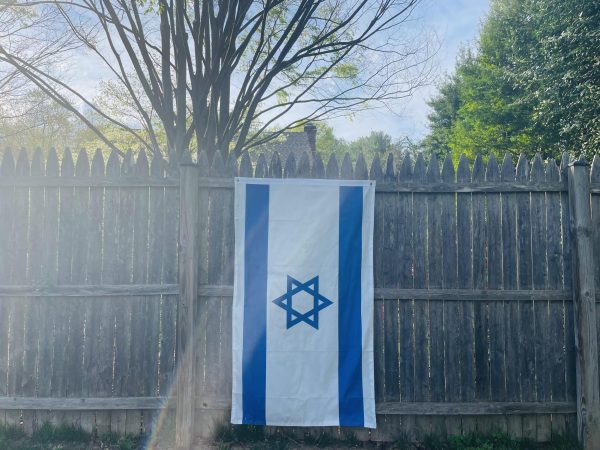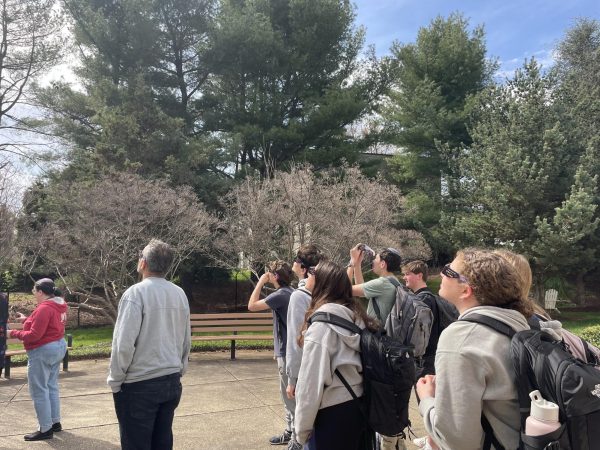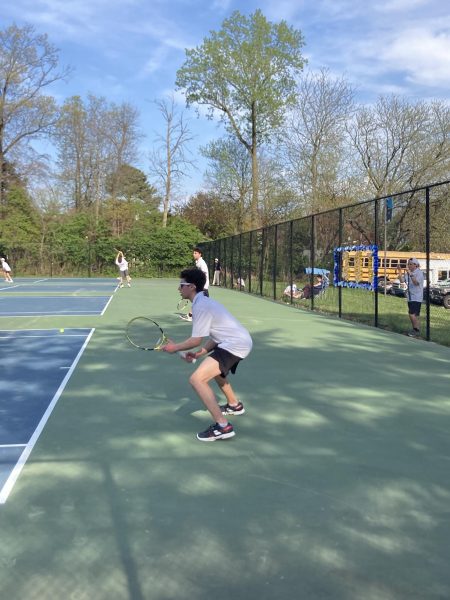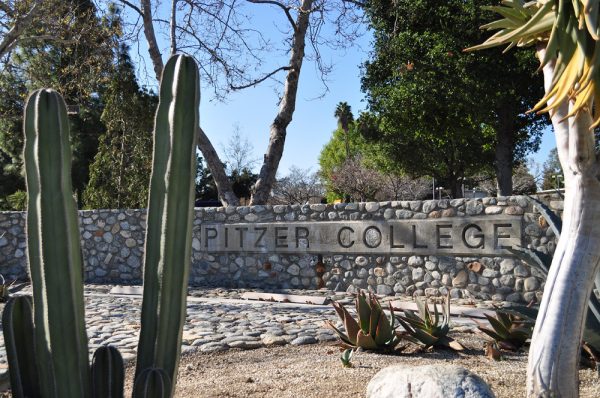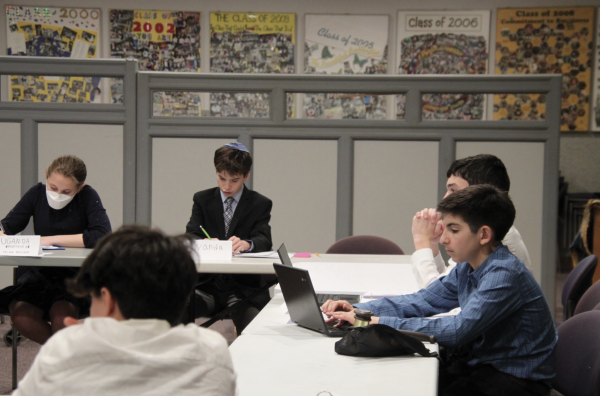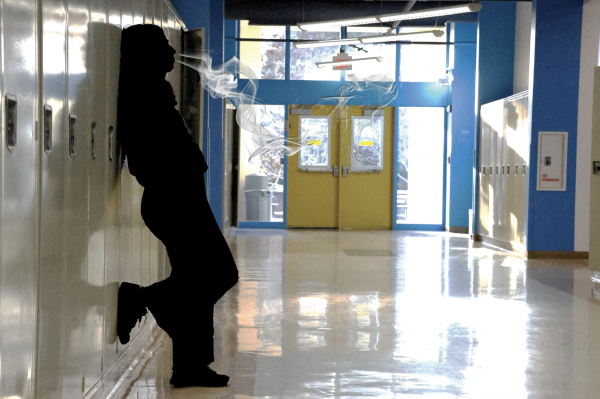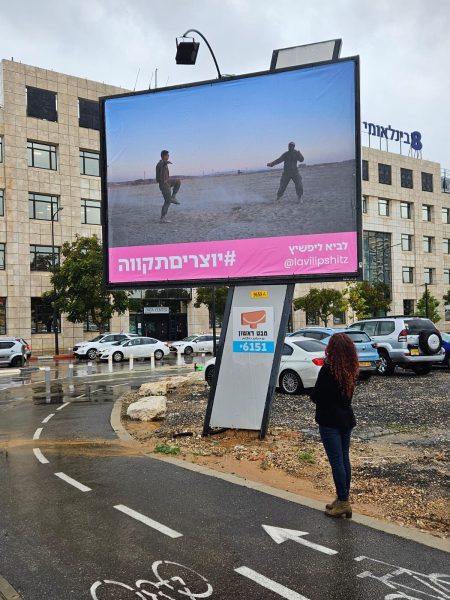School eyeing purchase of Stop the Bleed kits in wake of increased national tragedies
A student opens a standard first-aid kit in a classroom. New Stop the Bleed kits could change how JDS addresses medical emergencies on campus, most especially ones involving excessive blood loss.
Stop the Bleed active shooter and medical training could be scheduled at CESJDS before the end of the school year, according to Chief Financial Officer Julie Hoover. After this training, JDS would be able to carry Stop the Bleed Kits in the school.
Stop the Bleed kits are first aid kits that contain equipment, such as gauze and tourniquets, designed to minimize severe injuries in which excessive blood is lost.
Stop the Bleed kits were created in response to the steadily increasing issue of hemorrhaging, or loss of blood. Hemorrhaging is so dangerous that, if untreated, it can result in death just five minutes after the initial injury, according to Healthline.
Hemorrhaging-related injuries in schools have drastically increased due to increased danger on school campuses nationwide, specifically regarding mass shootings, which has led more schools to add Stop the Bleed Kits to their buildings.
While many schools still do not have Stop the Bleed kits, the kits recently gained publicity after state lawmakers in Texas made them mandatory in every school. Texas suffered eight mass shootings last year, which was the third-highest number per state this past decade. As a result, House Bill 496 was passed, which mandated the kits throughout all jurisdictions within Texas.
Stop the Bleed kits hold more powerful bandages than traditional first aid kids, so they are much more expensive. Prices range from $80 to over $900 depending on the type of kit; the administration is currently researching the best price option for the school.
“We have a list of different options [of kits] from our security task force member … so we’re going to price that out to make sure we’re getting the best value and the best equipment because not all of the kits have all of the equipment that we want,” Hoover said.
Hoover has been working on the logistics of introducing Stop the Bleed kits to JDS and believes the school will be seeing these kits in the near future.
“What we need to do first is an in-depth active shooter training, and we’re in the process of working with the principals right now about when to do that with the faculty,” Hoover said. “After that’s done, then we would schedule Stop the Bleed training.”
Only after these specific preparations will the school be ready for Stop the Bleed kits, so Hoover said she and other members of the administration are prioritizing the active shooter and medical training needed before the kits are placed within JDS.
During an era of rising antisemitism, polarization, and hatred, as well as threats against high school campuses, administrators believe these kits are crucial because of the increased safety they would provide.
“Times have changed, and we really want to be prepared in order to be ready for whatever could happen,” Hoover said.
Although the possibility of these kits coming to JDS has not widely circulated among the student body, sophomore co-class president Ellie Hasenberg views it as a step in the right direction.
“One of the most important things a school has to do is protect its students and faculty to ensure that they are safe,” she said. “If investing in the Stop the Bleed kits help[s] achieve that goal, I believe it’s a good idea.”



